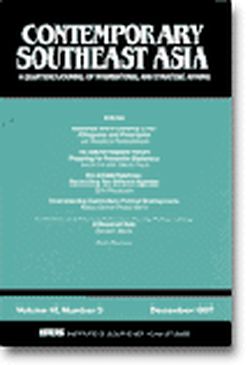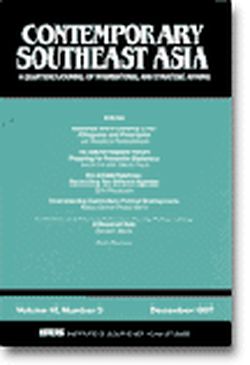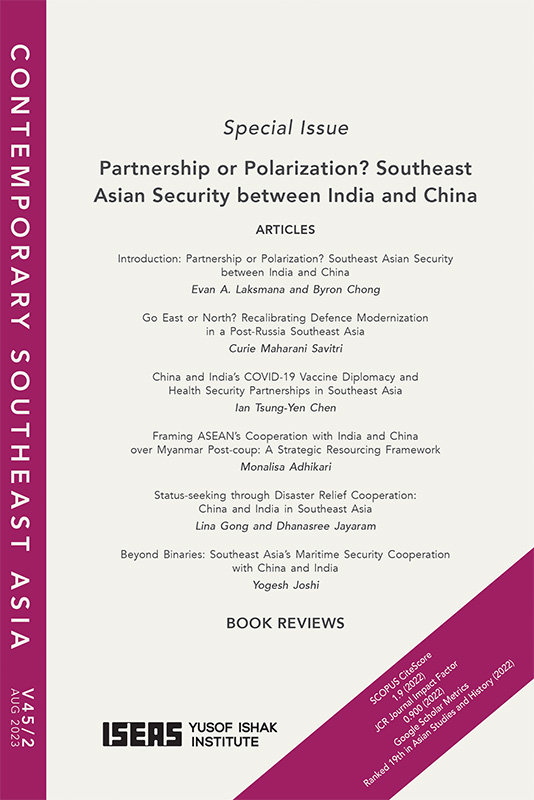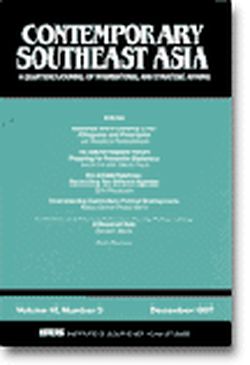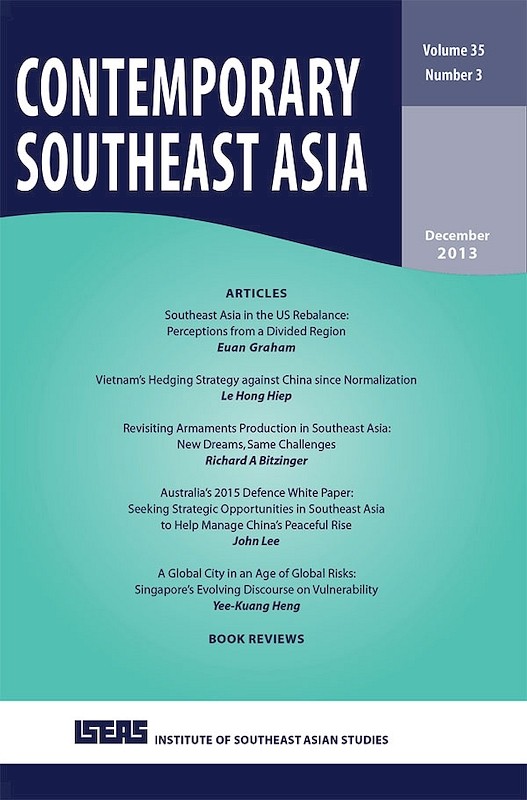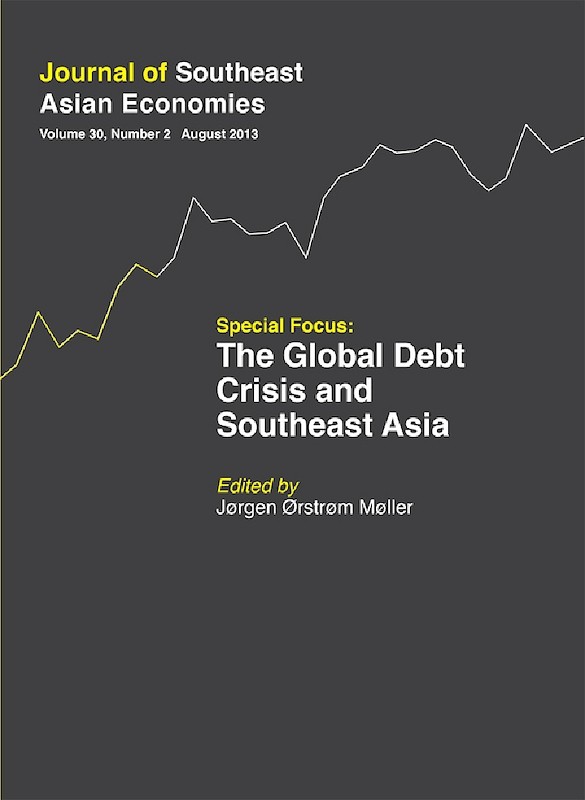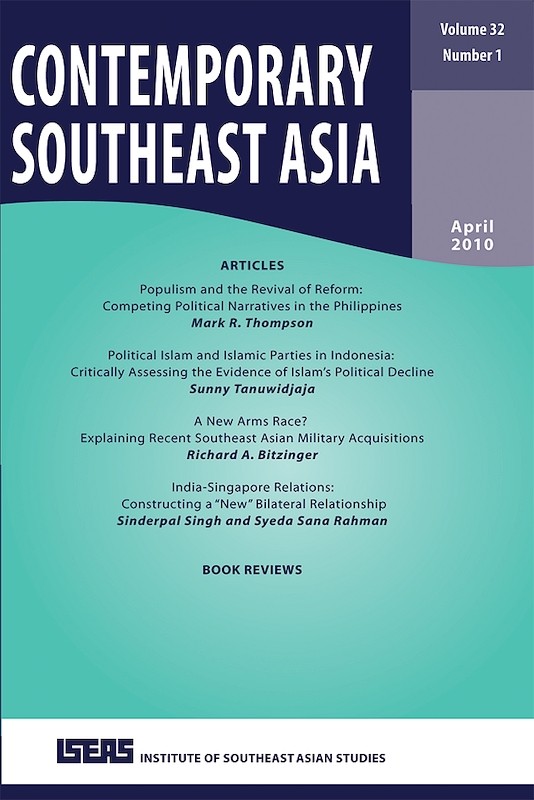-
- ARTICLES
-
Military spending and its relationship to gross national product (GNP), GNP growth, central government expenditures (CGE), CGE growth, find external indebtedness are examined in six Southeast Asian countries: Burma, Indonesia, Malaysia, the Philippines, Singapore, and Thailand. Military spending in the region varies widely and accounts for only a small portion of total developing country military expenditures. Similarly, the defence burden in the region varies greatly but is relatively low compared to the developing countries generally Nationcil economies and central government expenditures in the region have grown faster than military spending. Finally, military spending has been constrained by external indebtedness in the most highly indebted countries in the region (in Indonesia military spending has been curbed by declining oil revenues as well as increased foreign borrowing.
-
This paper examines the economic determinants of defence spending in six East Asian countries: Indonesia, Malaysia, South Korea, Singapore, Thailand, and the Philippines. It is hypothesized that economic factors play an important role in determining military spending levels in these countries. Our results, which support the earlier work by Geoffrey Harris, suggest that economic variables and resource availability are probably the main determinants of military expenditures. Three basic patterns were found: stabilization, augmentation, and distributed lags. While all countries increased their defence budgets as expected GNP increased, a significant variation between countries existed as to the timing of the increased defence allocations. The variations were so large that specific a priori generalizations could not be made as to how economic constraints control the budgetary process in these countries.
-
Although the imperatives of external debt service have led to a reduction in the size of defence budgets in most Third World countries, the impact of military spending cannot be understood separately from the political attractiveness of external borrowing in the 1970s. While the cumulative impact of defence expenditures has been to worsen Third World borrowers debt levels and hamper their debt servicing efforts, this is of secondary importance compared to the low political capacity of many debtor governments to mobilize and redirect the human and material resources under their nominal control towards that end. Many Third World countries used much of the borrowed capital to finance current budget deficits, government consumption and arms imports. Generally, the four major Southeast Asian borrowers - Indonesia, Malaysia, the Philippines and Thailand - did not use foreign capital to finance their budget deficits, but appear to have invested some borrowed funds in domestic defence industries. One result is an apparent arms import - substitution effect: their arms imports actually declined as a percentage of total imports even as their external debt increased. Thus, their arms imports do not impair their debt service performance the way they have worsened the debt service problems of heavily indebted Third World countries elsewhere.
-
The U.S. military buses in the Philippines do contribute to the Philippine economy, but the extent of this contribution remains in dispute between supporters and opponents of the bases. The compensation the United States pays for the retention of the bases has increased from US$500 million for five years, as negotiated in 1979, to US$962 million for two years, negotiated most recently in 1988. Compensation will remain a crucial issue as the two countries prepare for the next round of negotiations to begin in early 1990. Employment opportunities, local procurement of base goods and services, and personal spending by those Americans assigned to the bases are other important economic contributions derived from the presence of the bases. However, Philippine nationalism, changes in the perception of the threat, and other political and economic factors in each country call into question the future of the U.S. military facilities in the Philippines. Unless these substantive issues, as well as the differences over compensation, are resolved satisfactorily, the military bases could be in jeopardy as could the longer-term relationship between the United States and the Philippines.
-
Weapons procurement in Southeast Asia has undergone three transformations: initially all countries in the region relied on armaments provided through foreign military assistance; later as aid declined many were able to acquire large quantities of second-hand equipment; since the mid-1980s these countries have purchased limited quantities of highly advanced weapon systems at market prices.Strategic considerations played a secondary role in this process, which was influenced more by economics and international alignments.Although the level of Southeast Asian arms transfers consistently has been underestimated, a review of regional procurement policies shows that all Southeast Asian countries will find it increasingly difficult to maintain the size of their armed forces at present rates of spending.Three alternative military procurement options are examined: returning to reliance on second-hand weaponry from Europe, increased reliance on domestic arms production, and regional arms control to reduce military requirements. None of these options are likely to replace present procurement practices, suggesting that Southeast Asian armed forces will face serious procurement problems in the foreseeable future.
- BOOK REVIEWS
-
BOOK REVIEW: Security and Economy in the Third World by Nicole Ball, by Hans H Glismann, author
-
BOOK REVIEW: The Vietnamese Tradition of Human Rights by Ta Van Tai, by Nguyen Anh Thu, author
-
BOOK REVIEW: Vietnam: Facing the 1990s compiled by Richard Stubb, by Eero Palmujoki, author
